Traditionally, insurers have oriented their businesses around product lines. However, to meet the gulf in needs of the modern consumer and confront the myriad crippling headwinds the industry faces, a shift is needed; one that places adaptability at the heart of insurance ecosystems.
In this article, Mike Dwyer, EIS CTO and Co-founder, and Rory Yates, EIS SVP of Global Strategy, explore how adaptability works (or not) in insurance today and the key technologies that’ll drive the insurers of the future.

The efficiency paradox
Typically, cost reduction (cost per policy) remains one of the key drivers of insurance transformation today. This isn’t dissimilar to many technology-driven transformation projects generally. However, for insurance in particular, it’s the focus on efficiency that’s at the heart of the industry’s woes.
Implementing technologies that enable them to ‘do what they’ve always done’ but quicker and cheaper’ has created efficiencies but also left insurers unable to confront the issues of inflation, extreme weather, and fading consumer trust. Despite investing $100s million, they’ve been unable to adapt their business models at the pace needed. It’s the faster horses mentality we all try desperately to avoid.
If their next phase of transformation is to confront these headwinds and create the insurers of the future, putting adaptability at the heart of their business and technology design will be critical.
Transformation requires a change in the organisational mindset
When considering adaptability, the primary challenge for insurers is that their 1980s IT architecture and cost base, aka legacy, is prohibitive. It makes adapting to the ever-shifting sands of the environment, market, and customer too slow and expensive.
It’s becoming apparent to us that adaptability and the cost/flexibility of change are increasingly key to the transformation goals of insurers globally. To achieve this, a new business and technology working model is needed. An ‘agile’ model where cross-functional teams are engaged in the analysis, remediation, and deployment of effective change. All while reducing the reliance on IT and high-cost IT functions along the way.
It’s a model that puts customer data at the centre of every decision and outcome, supports multiple product lines, and converges multiple systems into one platform. A model that delivers a platform that embraces the benefits of forming new partnerships across an ever-wider ecosystem, be it new data, IOT, InsurTechs, data and analytics capabilities, or underwriting workbenches.
In short, a customer-centric model built on modern technology principles that can rapidly and cost-effectively adapt.
Like in eCommerce, this model performs best on highly agile and adaptive platforms. API-based integrations are fine, but the ability to make these work well and efficiently requires absolute data-fluidity, event-driven architectures, and micro-services. When brought together, they power change through the manifestation of each integration’s value to a customer, employee, broker, or employer.
Configuring this through tooling as opposed to code brings huge efficiencies. It reduces the need for high-value IT resources and avoids the typical bottlenecks in IT change while prioritising the ability to push multiple changes across multiple parts of the insurance ecosystem simultaneously.
When we look at the success of this approach, some key themes emerge repeatedly.
Firstly, API-based technology is important. That remains true. However, if the technology is built into the way an insurer currently works, it dramatically reduces the chances that it’ll be transformative. Giving way to an understanding that cloud-native, highly extensible, customer-based technology built on MACH principles is crucial.
Without it, a lot of the changes in experience, new products and propositions and the intelligence needed to deliver these effectively are harder to derive. After all, legacy is usually cheap and reliable in its linear function, so disrupting this has to be to drive new value creation.
The priority is to solve key problems and focus on differentiating opportunities in the early implementation phases. Minimum viable product and minimum viable platform are useful frames for driving this focus because they create momentum and success early in transformation programmes.
Crucially, when laying a foundation that allows for ongoing adaptivity, creating high levels of self-sufficiency is the best way to achieve overall success. This never means doing it alone, but it does mean that technology providers must drive higher degrees of training and knowledge into the insurer and their partners at the earliest opportunity.
Driving adaptability success via tech transformation

To make sure this new approach is successful, it’s essential to bring IT and business teams closer together. This is key to making innovation a working model, not just something that happens in a lab.
Change is risky, disconcerting, and mostly undesirable. So, it’s understandable that people are inclined towards a model of working that’s more attuned to what they’ve always done. Therefore, focusing on value creation and making sure everyone involved is clear about why new ways of working will be better for them is critical.
The benefits of addressing this early aren’t just good for adoption, it’s good for gaining buy-in early and for the adaptation that follows. Transformation today can be characterised as being in a continually evolving ecosystem promoting innovation as a working model for the modern insurer.
Clear ambition and vision are always essential, and identifying the people who really want to transform and act as the champions of this change makes this much easier. People typically have one question they need to answer if they want to drive new mindsets, and that’s: ‘What is in it for me?’ This isn’t purely selfish; it spans job roles, success and company benefits. Having clear objectives and key results (OKRs) that ladder clearly towards a clear vision is equally important. Our best clients have metrics that value customer outcomes. These, then ladder into the drivers of these outcomes such as the impact of a claims experience on retention and so on.
When the operational vision is clear and democratised, technology becomes the enabler of its realisation. Then, transformations become a lot easier to explain in every context across the business.
Self-sufficiency is the goal
The insurer’s core working model is ideally built on the idea of self-sufficiency, largely driven by high degrees of change to be managed and delivered through configuration. Additionally, even within the insurer, this is about less reliance on IT to make changes.
What’s also clear is that driving further adaptability in data, analytics, AI and ML are also huge factors, and will continue to be in the future.
To drive the effective use of advanced AI and ML capabilities that direct processes, drive customer and employee experience and determine outcomes, you need stable, reliable and secure data platforms. To apply them effectively, you need technology platforms that can manifest the value of these services easily and control outcomes responsibly and reliably.
Transforming the business model to be more adaptable
Ultimately, what’s needed in most insurers today is a full-scale transformation, and this is driven on many fronts.
● Data-hungry insurers will need more data from more sources
● The ability to embed into other experiences and remain secure in multiple places
● Risk removal or mitigation means data fluidity and intelligence like never before
● The proliferation of new distribution capacity, and 24/7 digitisation on any channel
● Relationship-driven models that sell, service, and adapt insurance propositions quickly and all from one place
● Regulation increasingly requiring better customer care
● Creating the insurer of the future requires simultaneously increasing the need for data, careful data management, and the ability to share it, all while providing greater security
Critically, we see the key technology enablers for adaptation as extensibility, openness, and scalability built around resilient and reliable services. That the value of an API is in your ability to leverage the value of the services the partner behind it can provide. That this data fluidity also drives intelligent outcomes, but you need event-driven and reactive architectures to achieve this.
The use cases for embedded, risk-mitigating, connected and intelligent services all need these shifts to work. We work with clients who look at the value and cost of a customer, not a policy. This is critical. Better relationships and revenue can only be driven from a single platform that drives 360-degree knowledge of the customer and the ability to act on that knowledge.
That’s why it’s a business and a technology transformation. It’s not one or the other. It’s both. Data, security, scalability and resilience are key to adaptability. As is bringing everybody in the business with you. When you do this, you create an innate ability to adapt fast and take advantage of rapid changes in the competitive landscapes that surround insurers today.




